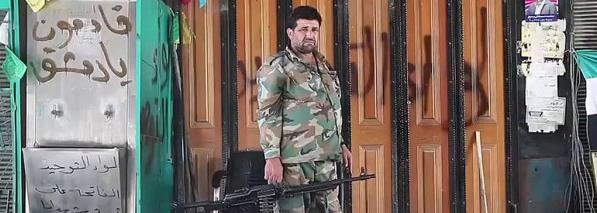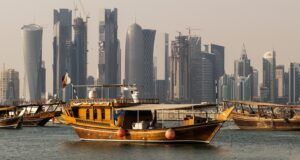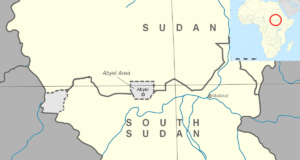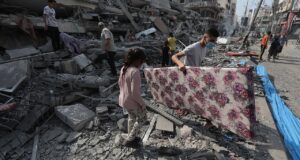Looking Past Geneva
The myriad of issues with any proposal put forward to address the Syrian crisis is troubling. In terms of intervention, the eminent just cause in Syria does not necessarily mean it would have a positive outcome at present. This fact is exacerbated by the fact that there would be no chance of Security Council authorisation (or indeed even limited action).
A lack of clear end-goals beyond the removal of the Assad regime and the subsequently dangerous political vacuum is as much of an impediment as the practicalities of military action. In the event regime change occurred, extremist opposition groups and sectarian divides within Syria would make the post-conflict context incredibly dangerous, perhaps even the worst case scenario in both humanitarian terms and regional security.
As a result, few advocates of R2P are advocating a full ‘boots-on-the-ground’ intervention in Syria. The principle of ‘proportionality’ (where the use of force should be the minimum to address the crisis), would be near-impossible to ascertain. Intervention in this context is too uncertain and too risky. It may do more harm than good.
There is relevance to Rory Stewart MP’s assertion that, in intervention, we must recognise decisions are made on the basis of what we can do, not what we wish was possible.8 Difficult decisions in intervention often constitute choosing the ‘least-bad’ option presented. In the case of Syria, many influential scholars have demonstrated there are few ‘good’ options available.9
The crisis has asked serious questions of the R2P norm and it’s influence within the international community. However, what it actually demonstrates is major actions (even for overwhelmingly humanitarian reasons), require a cost-benefit analysis.
Those concerned that the Syrian crisis will erode the influence of R2P should consider the above reality. Actions taken will always have a political and practical dimension. Furthermore, R2P was cited by the UN Security Council regarding situations in Mali, Sudan/South Sudan and the Central African Republic in the last two years (in the latter’s case as recently as December 2013).10
R2P is commonly raised in relation to Syria, and the conflict remains a foremost international issue, but it is not conducive to the reactive component of R2P at present. Following similar concern that controversy surrounding Libya had ‘damaged’ the norm, fears for it may be exaggerated.
Alternative Options in Syria
Whilst there are indeed few viable policy choices close to hand. A ‘boots-on-the-ground’ intervention is as unpredictable as it is unlikely. Arming the rebels is also unpredictable and does little to address the humanitarian crisis in the short term.
Observers have raised alternative policy options:
1. Limited Military Action
Early in the conflict, many observers strongly argued for measures similar to the no-fly zone utilised in Libya, and other forms of limited action, designed, in part, to tip the balance in he rebels favour. However, at present, arguments for ‘no-kill zones’, ‘humanitarian corridors’ and no-fly zones have gone cold.
The regime is far more prepared than it once was for such actions (including it’s new Russian anti-aircraft systems), the conflict is far more complex and the opposition far more weak and divided. Practically speaking, a no-fly zone would be incredibly expensive (unsustainable so) to maintain for the time surely required to begin tipping the balance.
Following the definitive discovery of chemical weapon use by the Assad regime, the threat of ‘punitive strikes’ by the US administration would have likely been composed of cruise missile strikes from the Mediterranean. However, as Richard Betts demonstrates, at this point in an intense conflict, such strikes would be ‘pinpricks’, which may “actually signal a lack of serious purpose.”11 This argument would likely stand for the majority of ‘limited’ action available.
Furthermore, when would these actions ‘end’? The logical end-point would be Assad’s removal from power, but how long would that take? Assad’s removal would not even be guaranteed with limited action. There would also be the post-conflict context; how would we guarantee Islamist groups do not seize control? Recall R2P’s stipulated ‘Responsibility to Rebuild’ following the crisis to ensure atrocities do not recur.
2. ‘Pure’ Humanitarianism
In the Geneva negotiations, one of the more realistic hopes is some minor humanitarian concessions by the Assad regime. The Economist however argues this may serve to strengthen the regime, as aid delivery through UN agencies will require the regime’s cooperation and consent, which serves to further provide the regime with legitimacy.
This may be true, but any avenue for action in Syria should be exploited. The humanitariansituation is dire, and reverse of this argument is the regime may need to moderate it’s behaviour when under observation by UN and other international officials. Purely humanitarian action is also more likely to find a Security Council consensus. In view of the ongoing humanitarian disaster in Homs, which has been subjected to a’starvation siege’, immediate UN relief is necessary, and should be pushed for.
3. Diplomatic Options
The culmination of the international community’s diplomatic efforts have been the current negotiations in Geneva. Unfortunately, it is unlikely the Assad negotiating team has the remit to agree to anything substantial. However, as above, pushing for concessions where possible (or even a temporary ceasefire), would be positive.
Furthermore, diplomatic options do not end with the Assad regime. Pressure on the Russian and Iranian governments, without whom Assad would be in a much worse position, is equally necessary. One of the foremost arguments for arming the rebels, is that Iran would be unwilling to indefinitely fund the Assad regime’s endless demands. It is worth noting that a highly influential factor in forcing the Milosevic regime to withdraw during the 1999 intervention in Kosovo, was pressure from it’s Russian protector.
To summarise, the outlook is indeed bleak, and the crisis continues to appear intractable. The unfortunate reality is that the West may be forced to respond to events pragmatically. Policy options such as supplying arms to the rebels, have merit, and may be worth further consideration, but one must also consider the end-goal of such action, and what our response would be if it does not yield results.
One must also recall that inaction also constitutes an action in-itself. Inaction will see the rebels
further under-trodden, further fictionalised, and benefit Assad’s position. Thus it is pressing to search for alternative options.
In terms of further action, responding pragmatically may take differing forms. If there is an opportunity to be exploited, such as major concessions by the regime or rebel advances on the ground, we should be ready to recognise such opportunities, and not miss an opportunity as the international community did previously. Equally important, are flashpoints reminiscent of Srebenicia, where the atrocities reach such a point that we would face a true last resort.
1 Ian Black. The Guardian., 31st Jan 2014. Link
2 BBC News, 22nd Jan 2014. Link
3 The Economist, 25th Jan 2014. Link
4 Mark Hosenball. Reuters, 27th Jan 2014. Link
5 BBC News, 11th Dec 2013. Link
6 Jonathan Eyal. The Resposibility to Protect, A Chance Missed. In: Johnson, A., and Mueen, S. (2012). Short War, Long Shadow. Royal United Services Institute, Whitehall Report 1-12. Link
7 Gareth Evans, Ramesh Thakur, Robert Pape. (2013) Correspondance, Humanitarian Intervention and the Responsibility to Protect. International Security, Vol. 37, No. 4, pp. 199-214.
8 In: Greg Knaus, Rory Stewart. (2012). Can Intervention Work? New York: Norton & Company.
9 Peter Berger. CNN, 1st Sept 2013. Link Richard K Betts. Foreign Affairs, 5th Sept 2013. Link
10 Global R2P, 13th April 2013. Link
11 Richard K Betts. Foreign Affairs, 5th Sept 2013. Link
Matthew Lower is a Senior Fellow with the HSC and Head of the Policy Unit.
Contactable at: matthew.lower@hscentre.org
Please cite this article as:
Lower, M. (2014). ‘Back to the Quagmire: Beyond Diplomacy in Syria’. Human Security Centre Policy Brief, Issue 2, No. 1.
 Human Security Centre Human Rights and International Security Research
Human Security Centre Human Rights and International Security Research




